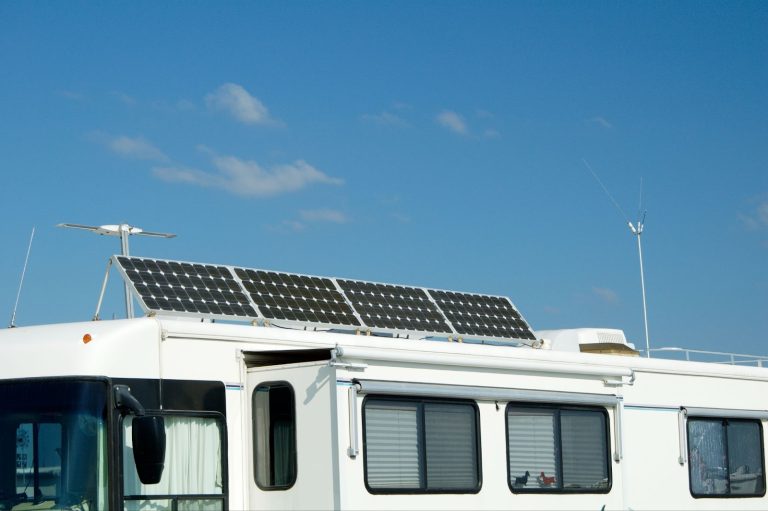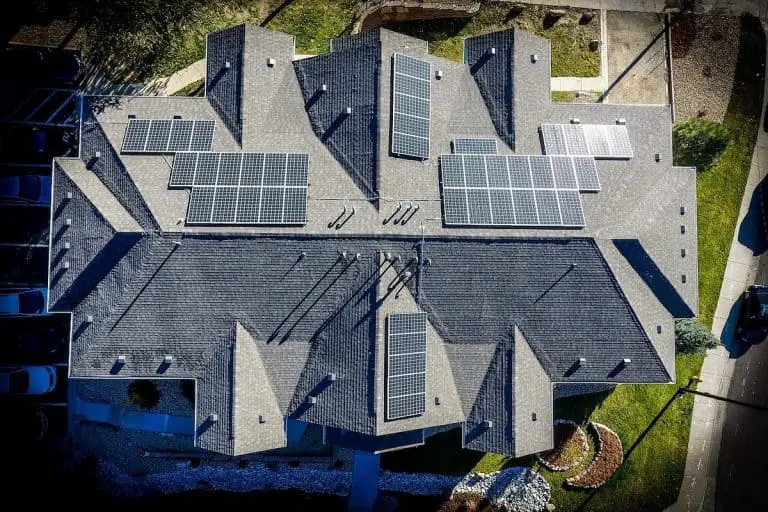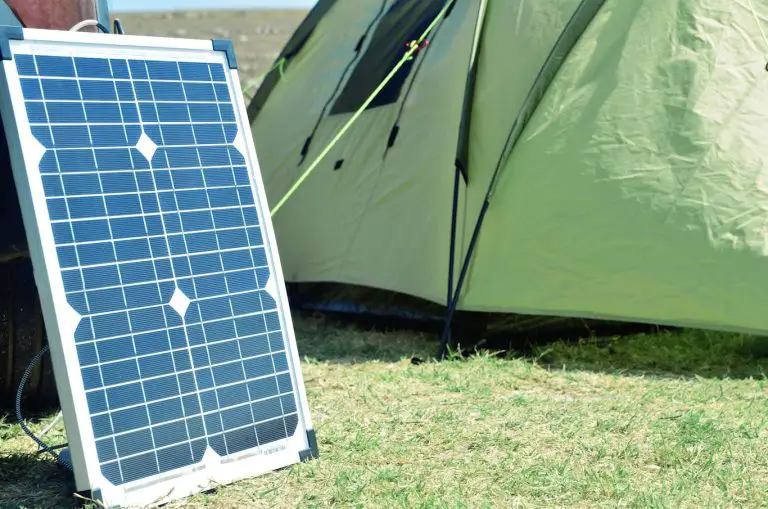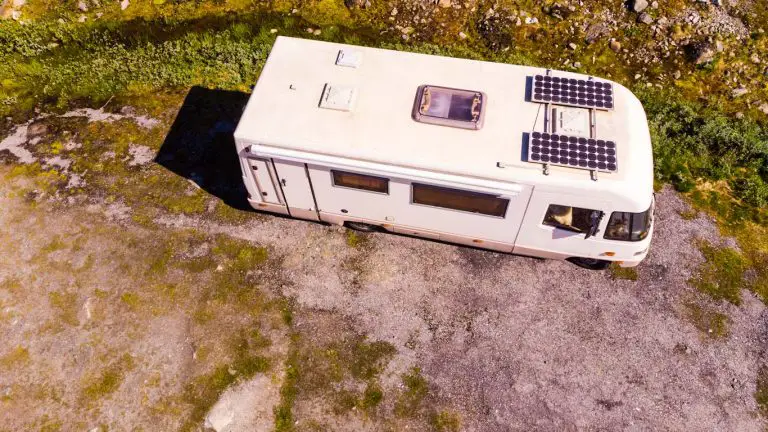How to Charge a Battery Directly from a Solar Panel and Why It’s Important
Solar panels can be used to charge batteries, but, more often than not, a battery cannot directly plug into the solar panel itself. A charge controller will usually be needed, which protects the battery by converting the panel’s voltage output to one that is suitable for the battery being charged.
Rechargeable batteries have been around for more than 150 years, and the concept of the first lead-acid rechargeable battery is still being used today. The charging method for batteries has made some strides in becoming more eco-friendly, and solar energy is one of the more sustainable options for recharging batteries.
This article will take a closer look at the various types of batteries and solar panels that are being used in today’s energy-conscious society.
The Importance of Charge Controllers
Whenever you are charging a battery directly from a solar panel, you will need to use a charge controller to regulate electricity flow from the panel to the battery. A charge controller can also be referred to as a charge regulator or a solar regulator in a panel system.
What a Charge Controller Does
A charge controller is a type of on-and-off switch for the current flowing from the solar panel to the battery. It also ensures the battery is receiving the correct voltage during charging.
A normal 12-volt solar panel usually puts out more than that, and it provides more voltage than what the battery needs. The charge controller will regulate the voltage provided and only let the required current flow to the battery.
Once the battery is fully charged, the charge controller will also shut off the supply of electricity. This protects the battery by preventing it from overcharging and damaging the battery or shortening its lifespan. The controller will only allow current through again once the battery starts to discharge.
At night, when the battery is not being charged, the controller is also working to keep a reverse current from flowing back into the panel and discharging the battery when it is possibly not even in use.
Charge Controllers Are Not Always Needed
There are times when you do not need to add a charge controller to the solar panel system. In those cases, you would still need to add a blocking diode to keep the panel from discharging at night.
However, it’s wise to always have a charge controller to protect the battery, and there’s no apparent consensus as to exactly when it’s not needed.
One general rule of thumb is that you do not need a controller if you have less than 5 watts per 100-amp hours of battery capacity. Another rule is that only lead-acid batteries can sometimes go without a controller and then only if performing low-current charging.
Depending on the system layout and charge controller used, you might also need to place a fuse in between the battery and charge controller.
Types of Charge Controllers
There are two main types of charge controllers, and you will need to decide which one will work best for your needs and the solar panel system that you have.
PWM (Pulse Width Modulation)
A PWM is the simpler, standard type of charge controller and also the less expensive option. When using a PWM, the solar panels’ voltage and the battery need to be the same.
The PWM works by sending charge pulses to the battery. When the battery is discharged, it sends a long, near-continuous pulse to charge the battery. When it is basically fully charged, it sends very short pulses that keep the battery charged.
These controllers are more suited to smaller solar panel operations and do not make full use of a solar panel system’s maximum power output.
MPPT (Maximum Power Point Tracking)
The MPPT controller can pair a solar panel system and battery of different voltages, and, as the more complex controller, it is also more expensive.
This controller will basically track the panel’s output and voltage that is needed by the battery. It then matches the panel’s output with that voltage to ensure that the battery is always charging optimally, i.e., that the maximum amps are put into the battery.
MPPT controllers are great when you have higher voltage panels and also offer the flexibility for systems to grow.
Charging a Battery from a Traditional Power Source
When it comes down to the basics, charging a battery, be it with solar or more traditional power sources, is pretty simple — you have to plug it into the power source, and there you go, the battery is charging.
For example, our phones are plugged into their chargers, and the chargers are usually plugged into a wall socket. Car batteries can also be charged using cables to hook it up to a charger that is plugged into a wall socket.
The moment a battery, be it one that is part of an entire device or a battery by itself, is plugged in and charging, you are making use of the power, or electricity, in your house, i.e., power from fossil fuels and the like.
What the Charger Actually Does
The charger itself is not the power source providing new charge to the battery, but it is the device that adheres to the battery’s charging protocols.
The charger must meet the battery’s imposed voltage and time constraints, or the battery could be damaged. The charger will also determine what happens when the battery is fully charged. It acts much like the charge controller on a solar system.
When a battery is charging, the charger uses its supply of electrical energy and forces it into the battery at the correct voltage and current for a determined amount of time. Internal processes in the battery convert the energy to chemical energy, and it is stored so that the opposite can happen when the battery is being used (source).
Charging the battery from a traditional power source can be faster and more reliable than when using a solar system because the power source is not reliant on clear and sunny daylight hours, and they are more tried and tested methods of producing power.
They are, of course, not as environmentally friendly, and they are also not portable. When using a solar system, your power source can travel with you, and, should something happen to the traditional power grid, you can still draw power from the sun and use it.
Solar Panel Charging Considerations
If you have made the decision to use solar panels, you will have to consider how the battery you want to charge and the solar panel system that you want to use will work together.
In other words, you must know how much charge needs to be put back into your battery each day and how many sunlight hours you will have per day to determine what your solar panel must be able to do.
A small 12-volt, 3-watt solar charger can be used very effectively for charging batteries for small systems like electric gates or fence chargers. For an RV’s battery, a system of larger panels will be required. These can be 12-volt, 150-watt panels, and you will probably use at least 2 or 3.
These solar panels can usually be attached to the RV roof and hooked up to the RV’s system. It allows the avid RV owner to go completely off the grid and still enjoy some basic electronics, like a fridge.
It is also important to keep in mind that the solar panels need to be maintained. This is usually not a massive undertaking. Basically, they just have to be kept clean to ensure maximum exposure to the sun. If there are extreme weather conditions such as hail, the solar panels will need to be protected.
Batteries that Can Charge from a Solar Panel
Just about any rechargeable battery can be charged from a solar panel, but some lend themselves towards this way of charging more so than others. This is not due to the battery’s composition and performance but, rather, the charging method’s very nature.
Secondary Batteries
Secondary batteries are known as rechargeable batteries. They are often used in devices where single-use batteries would become too expensive, like a cellphone, power tools, car batteries, etc.
Of the four main types of secondary batteries, lead-acid is the most popular and often used in the automotive industry. Batteries that contain nickel are used far less often. The use of lithium has become very popular for secondary batteries, and a host of consumer products, like laptops and phones, use lithium-ion batteries (source).
Constraints of Solar Panels
Despite the pros of using solar energy, one big problem remains. We cannot control the weather. If it is a foggy, misty, or rainy day and the skies are overcast, it greatly diminishes the panel’s capability of producing electricity.
The panel will continue to work in overcast weather but not as well as indicated during its standard test conditions.
Therefore, it is not necessarily recommended to use solar panels to charge batteries that potentially take a long time to charge. The wattage provided to the battery can vary during its charging cycle, potentially damaging the battery.
If the panel’s power supply is completely interrupted and it stops charging before the battery is full, it can also lead to damage.
Battery Requirements
The composition of the battery will determine the best practices for charging. A lithium-ion battery can be charged a little bit at a time, and it is recommended to do so. The battery should also be charged at a constant voltage.
One of the biggest dangers to a lithium-ion battery is heat. It is very important to keep cell phone and laptop batteries cool, whether it is busy charging or not.
The lifespan of a lead-acid battery can be prolonged if the battery is not allowed to discharge below 80% and if it is then restored to full charge.
These batteries can also be charged at a changing voltage. Starting at a considerably higher voltage and then reducing it once the battery is almost fully charged reduces charging time and battery damage.
Neither lithium-ion nor lead-acid batteries take kindly to being overcharged. If you are using a reputable charger, this should not happen, and the current should be cut off before overcharging starts.
If overcharging does occur, lithium-ion batteries can catch fire due to overheating. Lead-acid batteries will typically cause the battery to heat up and swell due to internal reactions.
Different Types of Solar Panels
When you decide to use solar panels rather than traditional electricity sources, or just as a supplementary energy source, it will be important to know what type of panel to invest in. The things you need to consider are the composition of the panel, the size, and the wattage output.
Solar Panel Composition
There are mainly three types of solar panels today: monocrystalline, polycrystalline, and thin-film. All three types perform roughly the same function, but they are made differently and come with their own pros and cons.
Mono- and polycrystalline panels are made from the same main substance — silicone wafers arranged on the panel. Monocrystalline panels, however, are cut from one, perfect silicone crystal, while polycrystalline panels are made from silicon crystal fragments that are melted and molded together.
Thin-film panels can be made from a number of materials, of which non-crystalline silicon can be one, layered on top of each other.
These panels are more lightweight and the cheapest of all three, but they are usually not quite as efficient as the two crystallines. Due to their weight, they are often an option for portable panels on RVs or boats.
Between the mono- and polycrystalline panels, the monocrystalline has the best efficiency but also costs more. It is a good option when space is limited and you need the maximum output. If you have more space, the polycrystalline is a good choice.
Size and Output
Solar panels come in a variety of different shapes and sizes. Some are portable and can easily be used on camping trips, while others are stationary and should be used to power your home. The bigger the panel, the larger the output usually is.
Solar panels are generally made up of 60 or 72 cells, although some manufacturers may have different cell configurations. The 60-cell panel can produce 270 to 300 watts, and the 72-cell can produce about 350 to 400 watts. These are under the standard test conditions, however, and can vary greatly depending on the weather.
Smaller solar charging devices are available, and these produce anywhere from 4 to 11 watts to charge smaller batteries.
Why Would You Want to Use a Solar Panel?
Regardless of the battery you need to charge, and the charger you use, you will always need a power source from which to charge. Fossil fuels are still the most widely used energy source, but eco-friendly energy alternatives, like solar energy, are becoming increasingly popular.
Clean and Affordable Energy
The benefits of using solar energy rather than fossil fuels have been lauded for quite some time. As one of the fastest-growing renewable energy sources, it is a good choice for the carbon footprint-conscious consumer.
The cleaner energy produced by the sun plays an important role in mitigating the damage caused to our environment and, in so doing, addressing climate change. It also enables us to make great progress in achieving our global goals for cleaner and more affordable energy for all.
Harnessing solar energy was once quite a costly undertaking but has since decreased significantly as the technology progressed. These days, solar energy is much more affordable and can be used with great success to provide electricity to those that cannot be connected to the energy grid (source).
In many African countries, it is one of the few options available to help people leave behind the dangers and harms of kerosene lamps and embrace the possibilities of the modern world. For others, it is a go-to option to live a more sustainable life and has also made it possible for entire buildings to go green.
Final Thoughts
Whether it is your cell phone, a stand-alone battery for when you go camping, or the battery in your electric car, using solar panels to charge a battery is a great choice if you want to get off the traditional energy grid and go green or at least move towards a more sustainable way of living.
In order to make this move, it is important to think carefully about the battery requirements, the panels you intend to buy, and the fact that you usually can’t plug the battery directly into the panels themselves. A charge controller will be necessary to ensure the battery receives the correct charge and to protect it from potential damage.







